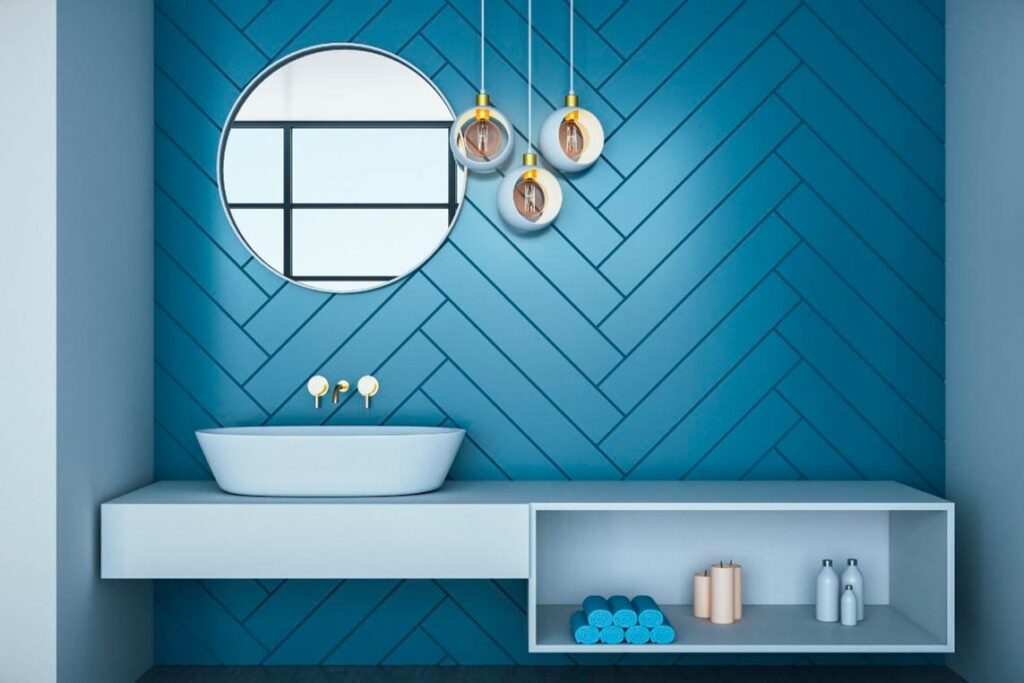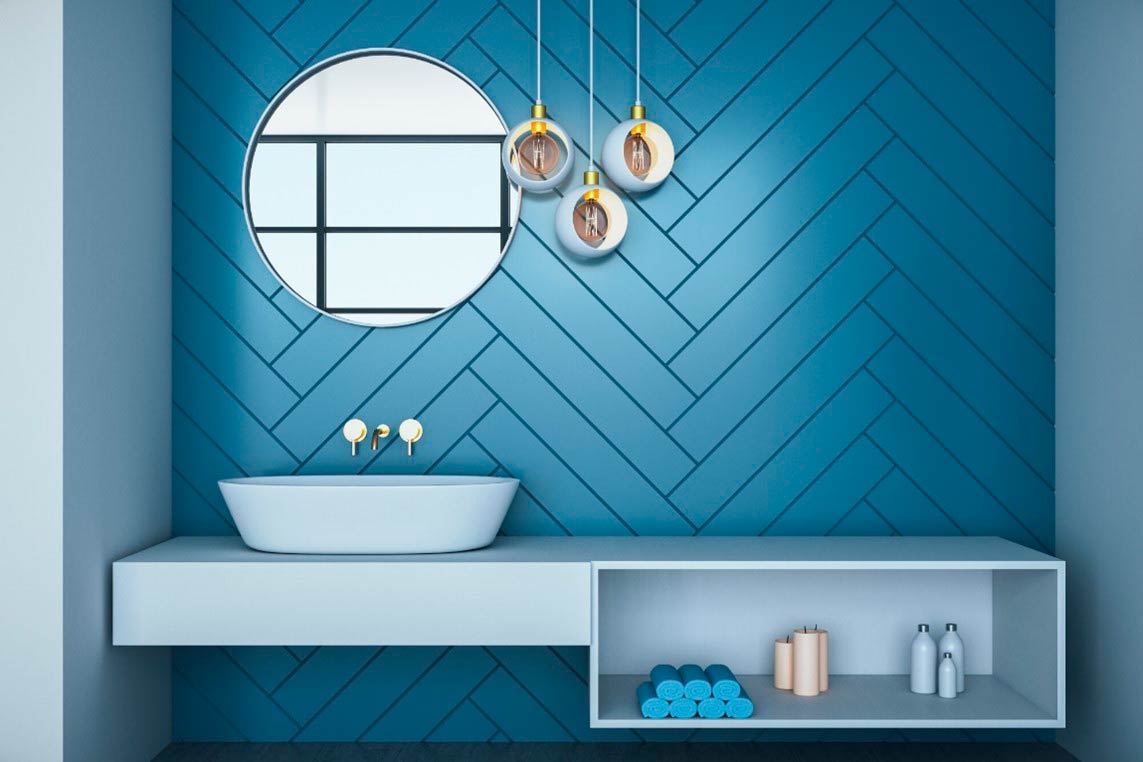Are your tiles old, outdated, and in need of a touch-up? Worried you’ll have to replace them entirely? Fret not! Did you know that you can paint tiles? Painting tiles gives them a whole new look and costs a fraction of the price it would cost to do a new tile installation. We are here to help you learn how to paint tiles the right way. Paint tiles like a pro by following the tips and tricks in this blog post. Read on to learn more!


The Benefits of Painting Tiles
Painting tiles is a quick and easy way to update the look of your home. It’s an affordable and eco-friendly alternative to replacing your flooring or resurfacing your countertops.
Painting tiles can be used in many different ways throughout the house. You can paint tile floors, paint tile bathrooms, paint tile kitchens, or paint tile walls.
Painting tiles is an affordable way to decorate your home without breaking the bank or spending a lot of time on it.
Painted tiles are a very popular option for homeowners because they offer many benefits such as being easy to clean, durable, and low-maintenance. This is why many people choose to paint their tile floors instead of replacing them with something else like wood or ceramic tile flooring.
Painting Versus Retiling Versus Reglazing
Painting tiles is a cheaper option than retiling. It doesn’t involve any demolition or removal of tiles which can be very expensive and time-consuming. Applying new tiles is also a task that even seasoned renovators usually leave to the pros.
Tile reglazing is a more permanent solution, but it requires more time, effort, and money to complete the process. Tiles need to be removed from the surface before they are cleaned with an acid-based cleaner, then they are coated with an epoxy glaze before finally being re-installed in their original location.
Paint colors are also much more varied than tile colors. Therefore, when painting tiles there are a lot more options to choose from for the color scheme that you want to have in your home.
If your tiles are cracked, molded, or otherwise damaged, painting may not be the best option. However, if your tiles are in good physical condition and just need some cosmetic love, tile painting is probably your better bet.
How to Paint Tiles: Paint Guide
All of these types of tile paint work in a similar way. They are all designed to be durable and resistant to water, stains, and scratches. The difference is the amount of time it takes to dry and the type of surface that they are suitable for.
Epoxy paints are created with an epoxy resin that is applied to the surface before being covered with a top coat. It takes about 24 hours for an epoxy paint job to dry, which is why it is best for high-traffic areas like kitchens and bathrooms.
One-paint epoxy has a one-step coating process, which makes it more suitable for less trafficked areas like bedrooms or hallways. This tile paint is very easy to work with since it doesn’t need multiple coats.
Two-paint epoxy has two different paint components mixed into one. This is applied in one step. Two-paint epoxy is the most common type of tile paint and is very easy to find in stores.
Two-process epoxy paint requires two coats: one primer coat and one top coat. It can take up to 48 hours to fully dry, which makes it best suited for large surfaces like bathroom walls or floors. However, it is the most durable of all the paint types.
Choosing Paint Colors
Paint colors are not just a matter of personal preference; they also have a big impact on how the room feels. But how do you decide which colors to use when painting tiles?
There are many factors to consider when choosing paint colors for the tiles, like whether you want to create a relaxing ambiance or you want to make the room appear larger.
Avoid cool colors in the kitchen and warm colors in spaces such as bathrooms or bedrooms. Cool colors can actually suppress appetite and make food look unappealing, while warm colors can be too stimulating in spaces meant for relaxation.

How to Paint a Tile Floor in Your Home
Painting a tile floor is not as difficult as you may think. It is actually quite easy with proper planning and following instructions.
The first step in painting a tile floor is to clean the surface thoroughly. You need to use a mild detergent and water with a professional-quality sponge, then rinse them off with clean water. After that, dry off the surface with a towel or cloth to remove any excess moisture.
Make sure to tape off any baseboards, door jambs, and fixtures such as toilets or sinks. You don’t want to get epoxy paint on these; it is very difficult to remove once it is applied.
Mix up your paint according to the instructions on the container and then pour it into your paint tray or pan. Follow the directions for applying and curing the tile paint.
Remember that two-process epoxy paint is recommended for high-traffic floors. This process will take much longer to cure, so make sure that you are able to block off the painted area long enough for it to dry.
Tools Needed for Painting Tiles
Some people prefer to use paint brushes for painting their tiles because they are good for detailed work and offer more control than a roller. However, rollers are better for covering large areas of tile quickly.
If you have a lot of small details that need to be painted, then an angle brush is the best option. A paint pan is also important in order to mix up your paints before you begin painting your tile.
Other tools and supplies that might come in handy are a putty knife, an electric mixer (such as the Rubimix-9), tack cloths for removing dirt and debris, sandpaper, and grout.
You’ll also want personal protective equipment, such as gloves, coveralls, and a respirator. Epoxy paint fumes are harmful if inhaled. Eye protection is also advisable in case of splashing.
Painting Bathroom or Kitchen Wall Tiles
To paint kitchen tiles, you will need to prepare the surface by cleaning it with a degreaser and then washing it with water. Kitchen tiles are often found on backsplashes and near ovens, so they tend to accumulate oils and grease from cooking that can ruin your epoxy paint.
Bathroom tiles will need to be cleaned with the appropriate tile cleaner. Bathroom tiles often have mineral deposits and soap scum, which require proper cleaning solutions to remove.
Next, apply your chosen epoxy paint according to the instructions. Make sure to give it ample time to cure before working on or around your tile.
For tiles on more heavily-used surfaces such as countertops or showers, consider using two-process epoxy paint. You can get away with one- or two-paint epoxies on backsplashes and other wall tiles.

How to Save Money on Tile Painting
The process of painting tiles is not difficult or expensive, but it does require some preparation and patience.
Be sure to properly clean and dry the tiles before painting. Improper cleaning can lead to problems with the tile epoxy paint, which leads to wasted money in the long run.
Use masking or painter’s tape to mask off any areas you don’t want to be painted. This will save you time and money trying to remove epoxy paint later.
Keep an eye out for sales on tile epoxy paint and tools. You can often find bargains on home renovation supplies during slow seasons like winter.
Tips for Painting Tiles Around Doors and Windows
Windows, doors, and other permanent fixtures can be a major nuisance to paint around when learning how to paint tiles. Here are some quick tips for handling them and not causing any paint accidents:
- If you are painting around doors or windows, make sure that they are closed and sealed off so that paint doesn’t get on them while you’re painting around them.
- Use a roller with a long handle to cover large areas of tile quickly and easily, and use a brush for more detailed work like edges or corners of walls where the tiles meet other surfaces like baseboards or door frames.
- Use a foam brush when painting around windows and doors because they are more delicate than tiles
- Painter’s tape can help prevent paint accidents
DIY Project Ideas for Your Tile Flooring
If you want your tile to really stand out, consider getting creative with your tile paint! You’re not limited to just painting it a single flat color. Here are some creative painting tips for getting funky with your tile:
- Paint patterns onto your tile
- Paint different tiles in different colors
- Painting your tile to resemble different materials such as stone or marble
- Create accent walls or floors with different tile paint colors
Ask the Tile Experts
If your tiles are in need of cheap and cheerful refinishing, you should learn how to paint tiles! It can save you tons of money versus reglazing or retiling, and you can even get creative with it.
For the best tile refinishing supplies, Rubi Tools is a trusted source for DIY home renovators and professionals alike. We offer a huge variety of tile tools for any kind of project. Check out our expansive online inventory today!



Post a comment